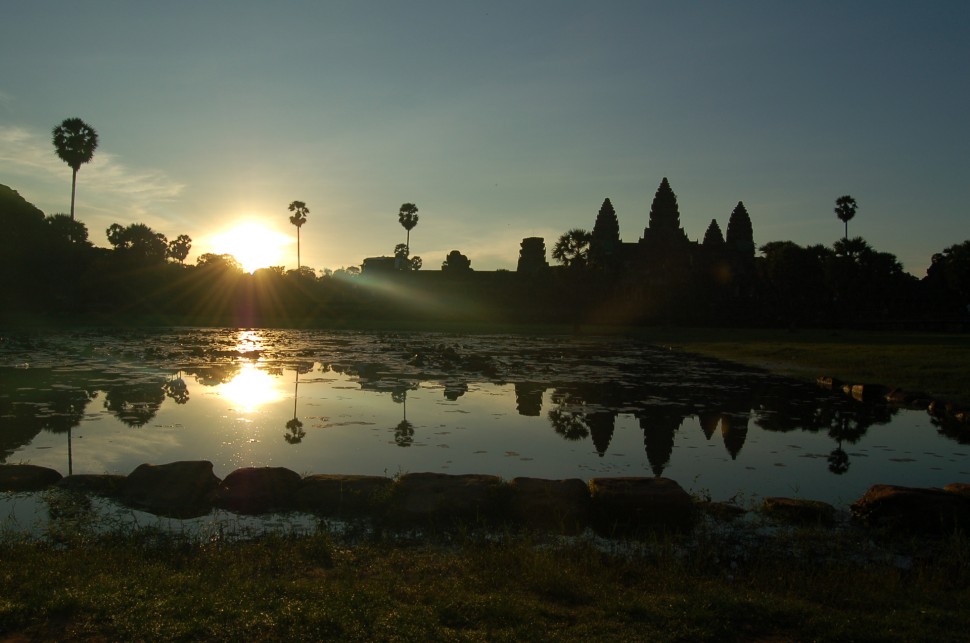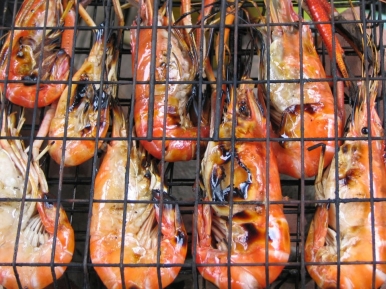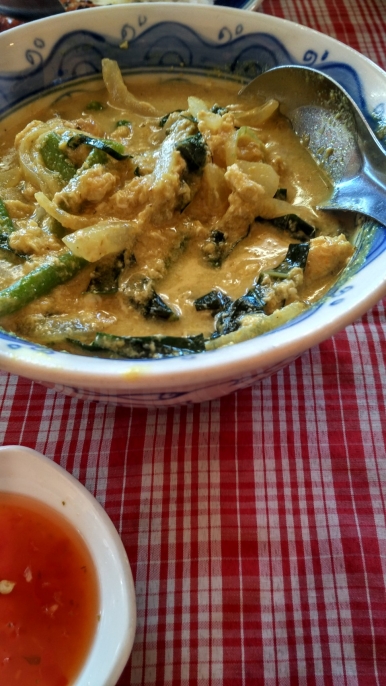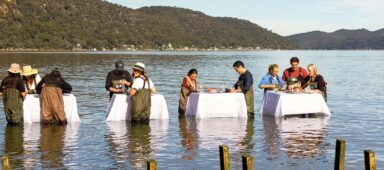While some stare open-mouthed with wonder at the temples of Siem Reap, others indulge their senses in equally satisfying ways

There is an audible gasp around the table when our guide, Steven Halcrow, cracks a fertilised duck egg into a pot of boiling broth. The contents, a 20-day-old duck embryo, disappear quickly beneath the bubbling surface of green herbs, noodles and chunks of tofu. It is the piece de resistance of the Duck Egg Soup we are about to enjoy. As we wait, he continues to select fresh herbs from a bowl on the table and add them to the concoction.
Halcrow is a trained chef who, until a few years ago, was serving up Michelin-starred dishes on fine porcelain and starched linen tablecloths in his native Scotland. Travelling in Asia, he met his partner Lina and together they launched Siem Reap Food Tours.

Duck egg soup is a personal favourite of Halcrow's and he assures us it's going to be one of the highlights on the tour. Sensing the squeamish among us may be losing our appetites, he advises that we “just think of it as an egg with a bit of extra texture”.
He's right; the broth is exceptional with a depth of flavour that's only achieved through extensive reduction over a long period of time. It is balanced perfectly with the freshness of the herbs and the heartiness of tofu and noodles.
Duck farmer and chef, Sela Chaam, opened Muscovy Duck Soup restaurant in 2012 and has since streamlined his culinary offerings to this one single dish, the allure of which fills every seat in the house on a nightly basis. His restaurant also doubles as his farm, and we dine surrounded by ducks and an impressive array of organic produce.
“The duck egg is good for fertility,” says Chaam, stopping by our table to check that we're enjoying our food. Chaam's is a belief held by many across Southeast Asia, where duck embryo is a common street food snack. But its place as the centrepiece to a soup is unique to Cambodia, and the specific use of Muscovy ducks is specific to Siem Reap.
With our bellies full and our culinary horizons expanded, our next stop is a taste of Cambodia's national dish, Fish Amok, which we eat in a quiet café, drinking Angkor beer. Amok refers to the process of steaming a curry inside a banana leaf. The result is coconut milk curry with a souffle-like texture, mildly spiced and flavoured with local herbs. Though it lacks the shock value of our last dish, it is flavoursome.

From here we venture to a typical Cambodian barbecue restaurant, outside which a large chunk of beef is being roasted and carved on an open flame; the smell is smoky and mouth-watering. Halcrow leads us through the throngs of hungry patrons to a free space, the only one, at the back of the restaurant.
Our table is immediately laden with plates of barbecued meat, baskets of fresh herbs and cucumber, bowls of chopped chillies, sliced lemongrass and wedges of fresh lime. We are also each served a bowl of Prahok, a fermented fish sauce that is a favourite with locals.
Halcrow tells us that Prahok is made by crushing, salting and fermenting small mudfish. Families will gut the fish on the riverside and have their small children crush them in baskets using their feet. Fermentation happens over weeks or even months until the fishy flavour intensifies. Prahok is served as a condiment or added to all manner of Cambodian dishes to give flavour.
Due to the abundance of mudfish, which swarm the rivers between December and March in Siem Reap, Prahok is plentiful and consumed in vast quantities. It is an unusual taste, intense like anchovies but with an additional sourness that complements the barbecued meat, herbs and lime.
“Prahok is unique to Cambodia and it's widely used in the food here,” explains Halcrow. “It's one of the reasons it's very hard to faithfully recreate Khmer dishes outside of Cambodia; ingredients like Prahok are very difficult to come by.”
And there are wider implications to such a signature flavour remaining so elusive outside of the country. “Cambodian cuisine is really rooted in its environment,” says Halcrow. “It's one of the reasons it's not a global export like Thai or Vietnamese food. It's difficult to replicate outside of Cambodia. That's why people are less likely to know much about it.”
With the taste of Prahok lingering in our mouths, we head to Siem Reap's large and lively night market where skewered food is king and you get extra points if you can guess what you're ordering when you point to it.
Crickets, small snakes and even tarantula are all piled high for those looking for a crunchy snack, but Steven has other plans for our group, ordering us Kang Kaeb Baok: grilled whole frog stuffed with pork mince and spices.
The frogs are skinned alive the same day before being stuffed and grilled over an open flame, and surprisingly, they taste delicious. So do the rice flour doughnuts that we pull apart with sticky fingers and the moreish jackfruit we share from a bag while wandering the market stalls.
We make one final roadside pit-stop for a dessert of sticky rice and chunks of steamed sponge pudding that are drenched in coconut milk. It's a sweet finale to our edible exploration of Siem Reap, and we enjoy it on wobbly plastic chairs while watching the tuk tuks ferry passengers back and forth to the market.
I ask Halcrow if he ever misses his Michelin-starred days. “Good food is good food, regardless of how it's served and how much it costs,” he says, after pondering the question for a moment. “Whether it's served on a plate or on the side of the road, it doesn't matter.”
With my pants now a little snugger than at the start of the evening, I have to agree.





